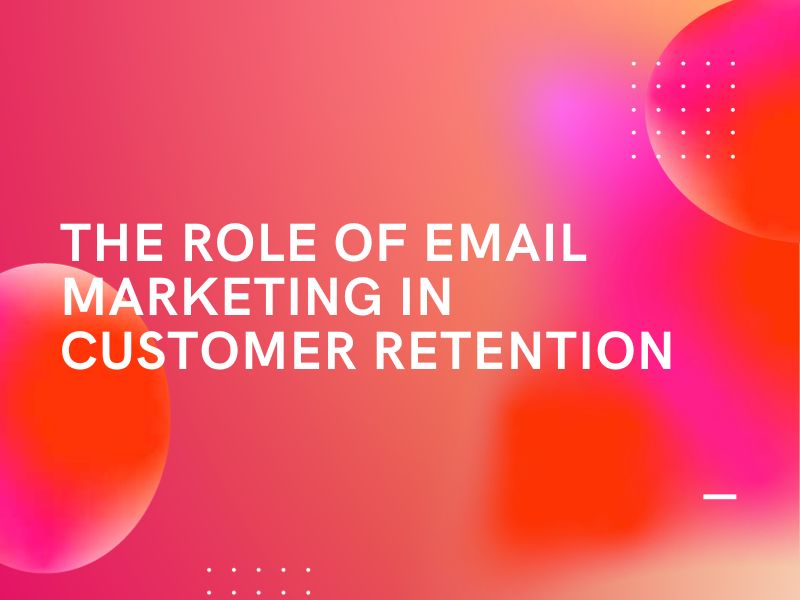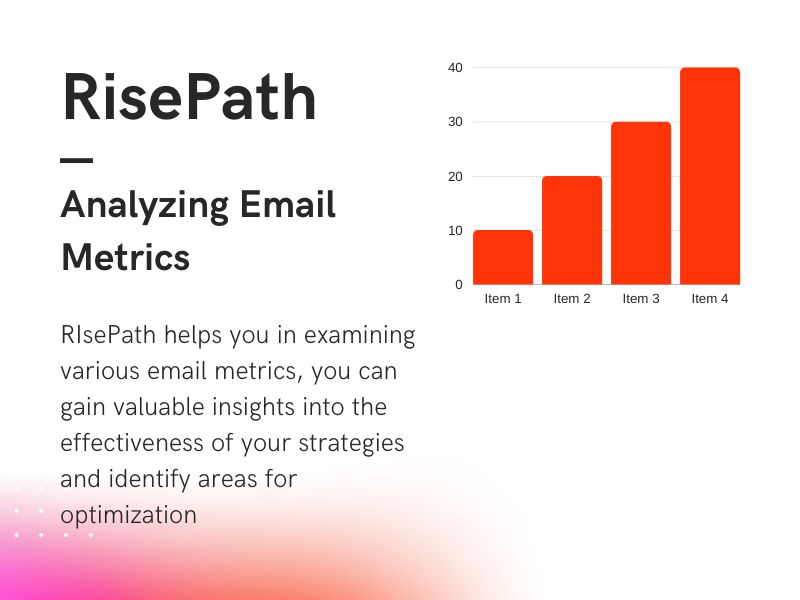Email marketing plays a crucial role in customer retention by allowing businesses to maintain regular communication with their customers. By sending targeted and personalized emails, businesses can keep customers engaged and informed about new products, promotions, and updates. This helps to build a strong relationship with customers and keeps them coming back for more.
Email marketing also enables businesses to nurture customer loyalty by providing exclusive offers and rewards to their subscribers. By segmenting their email list based on customer preferences and purchase history, businesses can send tailored offers that resonate with their customers’ interests. This personalized approach makes customers feel valued and appreciated, increasing their likelihood of staying loyal to the brand.
Moreover, email marketing is an effective tool for re-engaging inactive customers. By sending reactivation campaigns or win-back emails, businesses can remind inactive customers of the value they offer and encourage them to return. These emails can include special incentives or personalized recommendations based on the customer’s previous interactions, enticing them to re-engage with the brand.
The Importance of Email Marketing in Customer Retention
Email marketing plays a crucial role in customer retention for several reasons. Firstly, it allows businesses to maintain regular communication with their customers. By sending personalized and targeted emails, businesses can keep customers engaged and informed about new products, promotions, and updates. This consistent communication helps to build trust and strengthen the relationship between the business and the customer, increasing the likelihood of customer loyalty and repeat purchases.
Secondly, email marketing enables businesses to segment their customer base and send tailored messages to different groups of customers. By analyzing customer data such as demographics, purchase history, and preferences, businesses can create customized email campaigns that resonate with specific customer segments. This level of personalization enhances the customer experience and makes customers feel valued, ultimately leading to higher customer satisfaction and retention rates.
Furthermore, email marketing allows businesses to automate their customer retention efforts. With the help of email marketing software, businesses can set up automated email sequences that are triggered by specific customer actions or events. For example, a welcome email can be automatically sent to new customers, or a re-engagement email can be triggered for customers who haven’t made a purchase in a while. These automated emails help businesses stay top-of-mind and encourage customers to stay engaged with the brand.
Understanding the Basics of Email Marketing
Marketing strategy that involves sending commercial messages to a group of people via email. It is a direct and cost-effective way to reach and engage with your target audience. By using email marketing, businesses can communicate with their customers, promote their products or services, and build relationships to enhance customer loyalty and retention.
Email marketing campaigns typically involve sending newsletters, promotional offers, updates, or other relevant content to a list of subscribers. These subscribers have voluntarily provided their email addresses and have expressed interest in receiving communication from the business. This permission-based approach ensures that the recipients are more likely to be receptive to the messages they receive.
To execute an effective email marketing campaign, businesses need to consider several key elements. First, they need to build a quality email list by capturing email addresses through various channels such as website sign-ups, social media, or in-store interactions. It’s important to obtain permission from subscribers to comply with anti-spam regulations and maintain a positive reputation.
Next, businesses should focus on creating compelling and engaging email content. This includes crafting attention-grabbing subject lines, personalizing the messages, and providing valuable information or offers that resonate with the recipients. The content should be tailored to the target audience’s preferences and needs to increase the chances of engagement and conversion.
Scheduling Email campaigns
Another crucial aspect of email marketing is the timing and frequency of sending emails. It’s important to strike a balance between staying top-of-mind with customers and avoiding overwhelming them with excessive emails. Testing and analyzing the open rates, click-through rates, and unsubscribe rates can help businesses determine the optimal timing and frequency for their email campaigns.
You can read more about the email marketing in 2023: Unveiling the Power and Relevance of Email Marketing in 2023
Furthermore, email marketing allows businesses to track and measure the performance of their campaigns. By analyzing metrics such as open rates, click-through rates, conversion rates, and ROI, businesses can gain insights into the effectiveness of their email marketing efforts. This data-driven approach enables them to make data-backed decisions, refine their strategies, and continuously improve their customer retention efforts.
Lastly, email marketing provides businesses with valuable insights and data on customer behavior. By tracking email open rates, click-through rates, and conversion rates, businesses can gain valuable insights into customer preferences and interests. This data can be used to refine email marketing strategies and make data-driven decisions to improve customer retention efforts. By continuously analyzing and optimizing email campaigns, businesses can ensure that they are delivering relevant and engaging content to their customers, ultimately leading to higher customer retention rates.
Personalization: The Key to Effective Email Marketing
Personalization is indeed the key to effective email marketing. By personalizing your emails, you can create a more tailored and relevant experience for your customers. This can lead to higher engagement rates and ultimately, better customer retention. When you address your customers by their names and send them content that is specifically relevant to their interests and preferences, they are more likely to open, read, and respond to your emails. This level of personalization helps to build a stronger connection between your brand and your customers, making them feel valued and understood.
An effective way to personalize your email marketing is by segmenting your email list. By dividing your subscribers into different groups based on their demographics, behaviors, or preferences, you can send targeted emails that are more likely to resonate with each segment. For example, you can create segments based on age, location, purchase history, or past interactions with your brand. This allows you to craft emails that speak directly to the needs and interests of each segment, increasing the chances of engagement and conversion.
Dynamic content in Email Marketing
Another important aspect of personalization in email marketing is using dynamic content. Dynamic content allows you to customize different elements of your emails based on individual subscriber data. For instance, you can include product recommendations based on a customer’s previous purchases or browsing history. You can also display different images or offers depending on the recipient’s preferences or location. By leveraging dynamic content, you can deliver highly personalized and relevant emails that capture the attention of your customers and drive them to take action.
For help: What Is Bulk Email Marketing
Personalization in email marketing goes beyond just addressing your customers by their names or using their past purchase history. It also involves understanding their preferences, needs, and pain points. By conducting surveys, analyzing customer data, and monitoring their interactions with your brand, you can gain valuable insights into what matters most to them. This knowledge allows you to create email campaigns that truly resonate with your audience, providing them with the information, offers, or solutions they are seeking. By consistently delivering personalized content that adds value to their lives, you can foster long-term relationships and improve customer retention.
Optimizing Email Deliverability for Maximum Impact
is crucial for maximizing the impact of your email marketing efforts. When your emails reach the intended recipients’ inboxes, you have a better chance of engaging them and driving desired actions. Here are some key strategies to optimize email deliverability:
- Build a quality email list: Start by collecting email addresses from people who have willingly opted in to receive your emails. Avoid purchasing or renting email lists, as they often contain outdated or irrelevant addresses, which can harm your deliverability.
- 2. Use double opt-in: Implement a double opt-in process where subscribers confirm their email addresses. This helps ensure that the email addresses you collect are valid and reduces the chances of spam complaints.
- Maintain a clean email list: Regularly clean your email list by removing inactive or bounced email addresses. High bounce rates and low engagement can negatively impact your deliverability. Consider using email verification services to validate email addresses before adding them to your list.
- Segment your email list: Segmenting your email list allows you to send targeted and personalized emails to specific groups of subscribers. By tailoring your content to their interests and preferences, you can increase engagement and improve deliverability.
- Craft compelling subject lines: Your subject line plays a crucial role in determining whether your email gets opened or not. Avoid using spam trigger words and misleading subject lines, as they can lead to your emails being marked as spam.
- Optimize email content: Ensure that your email content is relevant, valuable, and engaging. Use a clear and concise writing style, include compelling visuals, and provide a clear call-to-action. Emails that provide value to recipients are more likely to be opened and acted upon.
- Test and monitor email deliverability: Regularly test your emails across different email clients and devices to ensure they render correctly. Monitor your email deliverability metrics, such as open rates, click-through rates, and spam complaints, to identify any issues and make necessary adjustments.By implementing these strategies, you can improve your email deliverability, increase engagement, and maximize the impact of your email marketing campaigns.
Tracking Success and Making Improvements
Analyzing email metrics is crucial for tracking the success of your email marketing campaigns and making improvements. By closely examining various email metrics, you can gain valuable insights into the effectiveness of your strategies and identify areas for optimization. One important metric to analyze is the open rate, which measures the percentage of recipients who open your emails. A low open rate may indicate that your subject lines are not compelling enough or that your emails are being sent at the wrong time. By testing different subject lines and sending emails at different times, you can improve your open rate and increase engagement with your audience.
Another important metric to consider is the click-through rate (CTR), which measures the percentage of recipients who click on links within your emails. A low CTR may indicate that your content is not engaging or that your call-to-action buttons are not prominent enough. To improve your CTR, you can experiment with different types of content, such as personalized recommendations or exclusive offers, and ensure that your call-to-action buttons are visually appealing and easily clickable.
Furthermore, analyzing the conversion rate is crucial for understanding how effective your email campaigns are in driving desired actions, such as making a purchase or signing up for a newsletter. A low conversion rate may indicate that your emails are not effectively communicating the value proposition or that your landing pages are not optimized for conversions. By testing different email designs, messaging, and landing page layouts, you can improve your conversion rate and ultimately drive more desired actions from your email recipients.
In addition to these metrics, it is important to analyze the unsubscribe rate and spam complaint rate. A high unsubscribe rate may indicate that your emails are not meeting the expectations of your subscribers or that they are receiving too many emails. By segmenting your email list and sending more targeted and relevant content, you can reduce the unsubscribe rate and improve customer retention. Similarly, a high spam complaint rate may indicate that your emails are being perceived as spammy or irrelevant. By ensuring that your emails comply with anti-spam regulations and providing valuable content to your subscribers, you can reduce the spam complaint rate and maintain a positive reputation.
Overall, analyzing email metrics is essential for tracking the success of your email marketing efforts and making data-driven improvements. By monitoring open rates, click-through rates, conversion rates, unsubscribe rates, and spam complaint rates, you can identify areas for optimization and implement strategies to enhance customer retention. Remember to regularly review and analyze your email metrics to stay informed about the effectiveness of your campaigns and continuously refine your email marketing strategies.



Comments are closed, but trackbacks and pingbacks are open.